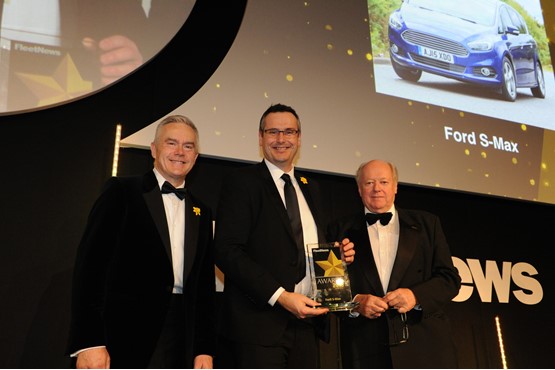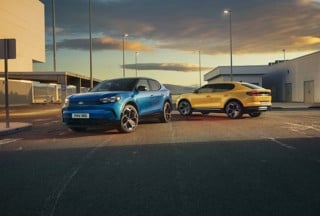Carmaker resists temptation to plug registration gaps with short-cycle business; ‘great’ driver response to PHEV trials. By Stephen Briers
Ford is going through a transitional phase with the renewal of key models such as the Fiesta impacting on sales, which dipped by almost 10% last year in a market down 5.6%.
More disruption is to come, with the company’s biggest fleet car, the Focus, due for replacement this year. In the space of 12 months, Ford will have renewed its two biggest sellers.
Managing run-out of old product and introduction of new is rarely an exact science, but Ford resisted the temptation to plug registrations gaps with short-cycle business.
Its rental sales last year fell by almost 7%, or 2,595 units, as part of a strategy to be more targeted in its relationship with the low-profit segment, according to Owen Gregory, director, fleet operations.
“We did see a softer market in corporate last year but some of it is where we are in our product cycle,” he says. “We were expecting rental volumes to be down. We will serve the market in a way that supports strong residual values (RVs).”

Fleet News: How well did you manage the changeover from old Fiesta to new, and how has it been received by the market?
Owen Gregory: It always takes time to settle when you are coming out from an old model into a new one. It is also positioned differently to the previous vehicle.
I was delighted with the recognition at the awards and also with the RV guides which puts us in a strong position.
There was an initial uplift and that is now solidifying. The decisions we have made about how we went to market and the channels we are in have paid off.
Fiesta is now out of that challenge but Focus is going into that phase, which comes with disruption. Our target is making that happen smoothly
FN: What are your forecasts for 2018?
OG: We have no strategic change to our corporate strategy, but we will be busier than usual with the product launches. We expect the market to be down a little because there is still some uncertainty.
We need clarity on diesel. It has a role to play, although there are also opportunities with other solutions such as hybrid in real-world roles.
FN: And vans?
OG: We expect to see pick-ups strengthen this year and the Ranger will drive our share up. Small vans are softening as we stopped selling the Fiesta van – it was 4,000 units a year – but when the new van comes in , that sector will pick up.
Customers are holding off, waiting for that model. Medium and large vans are broadly stable.
FN: You have refreshed your van line up; what are the big improvements?
OG: We have to keep customers up-to-date and help them understand the improvements we have made, especially around real-world fuel economy.
With the changes to WLTP , some of the significant moves forward in economy do not come across in the figures.
But six-speed transmission, active grille shutter and other technologies are going into these improvements.
The other journey is on connected vehicles. We have introduced FordPass Connect on the Transit Connect and (forthcoming) Fiesta van, which helps drivers to be more efficient.
It includes online vehicle health checks, Wi-Fi hotspot and live traffic updates. Through the phone app, you can load multiple vehicles with basic information on location, security, tyres and oil levels, which gives benefits to small fleets now.
Later this year, we will announce features that are more focused on large fleet operators.
FN: Ford opened its smart mobility innovation centre in London last year to much fanfare. What innovations have been introduced as a result?
OG: Our smart mobility ideas are forming something real. We have a last mile delivery concept that pulls together technology to create innovative future solutions for urban areas.
On this pilot, the van decides how fast or slow the hub is moving and makes a decision whether to de-camp and use bikes or continue on foot. We also have a chariot initiative where minibuses go to places where public transport doesn’t go.
As the urban environment becomes more focused on emissions and congestion, we have to think about how fleets can continue to deliver services by bringing technology and the vehicle together.
FN: How does this link in with your plug-in hybrid pilot ?
OG: Innovative solutions for urban areas has to come together with plug-in hybrid technology. Our project is going well with our 16 fleet partners.
We are learning about how the product performs, such as real-world range with a fully laden vehicle and how they fit in charging throughout the day, and driver feedback is great.
By the end of the trial, we will have a lot of insight to go into the production vehicle in 19 months.
FN: Last year you told us Ford could become more than a supplier of vehicles by providing consultancy advice to fleets. Is this now happening?
OG: We are working on clear and simple-to-understand guides on the big questions, for example, choice of fuels to help fleets understand their options, where diesel is the right solution and where other powertrains have a role to play.
We want to give fleet managers the confidence to lead the discussion within their own organisations. We will also be looking to bring clarity to WLTP.
FN: Speaking of fuels, are you seeing any increase in demand for petrol vehicles?
OG: Petrol vans are of growing interest and we are seeing smaller fleets buying them. But it still represents a small part of the market. On small vans, such as Fiesta van, it will be a popular choice, and for low mileage, urban use, it could become the dominant choice.
For longer journeys, diesel is still the right choice.
Ford is seeing a lot of uncertainty in the market, with the diesel debate, confusion over future taxation and access to urban centres among the causes.
“Lots of fleets are thinking about how they can make the best choice now for the near- and long-term,” Gregory says. “It’s a hot topic and we hope to bring some clarity to these big questions to help drive the thinking in the industry.”
























Login to comment
Comments
No comments have been made yet.